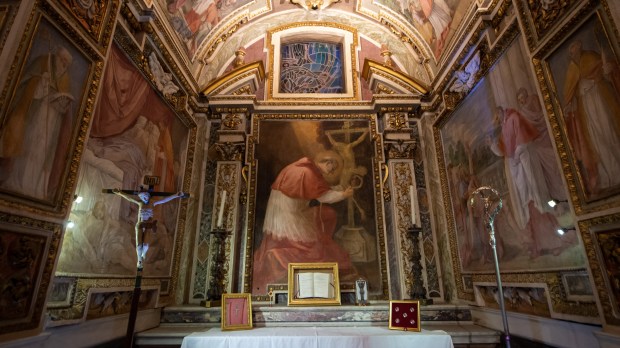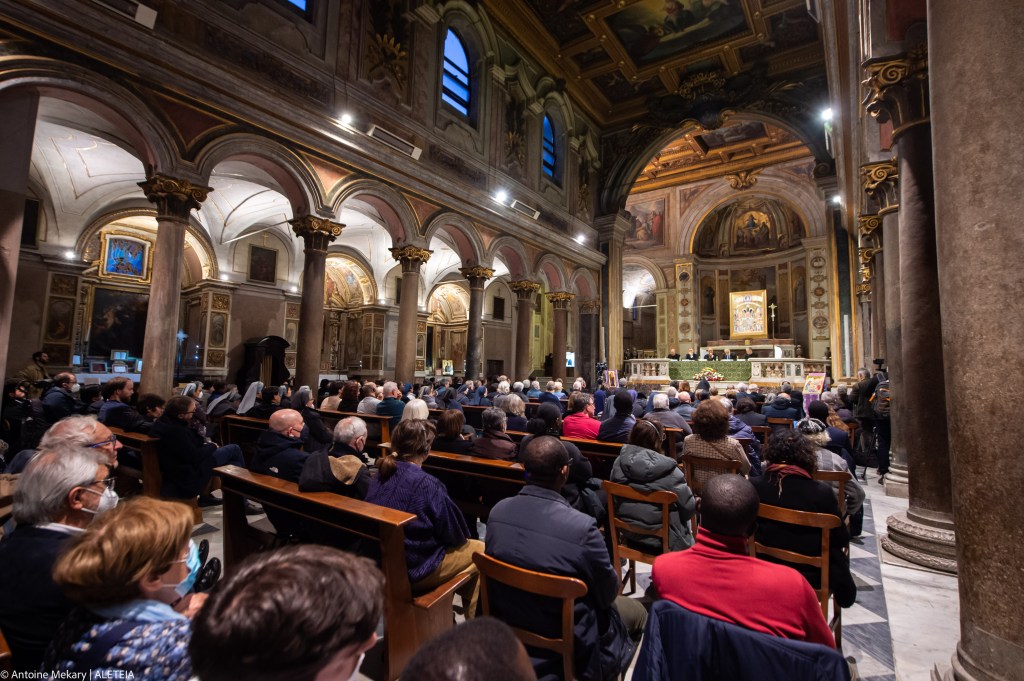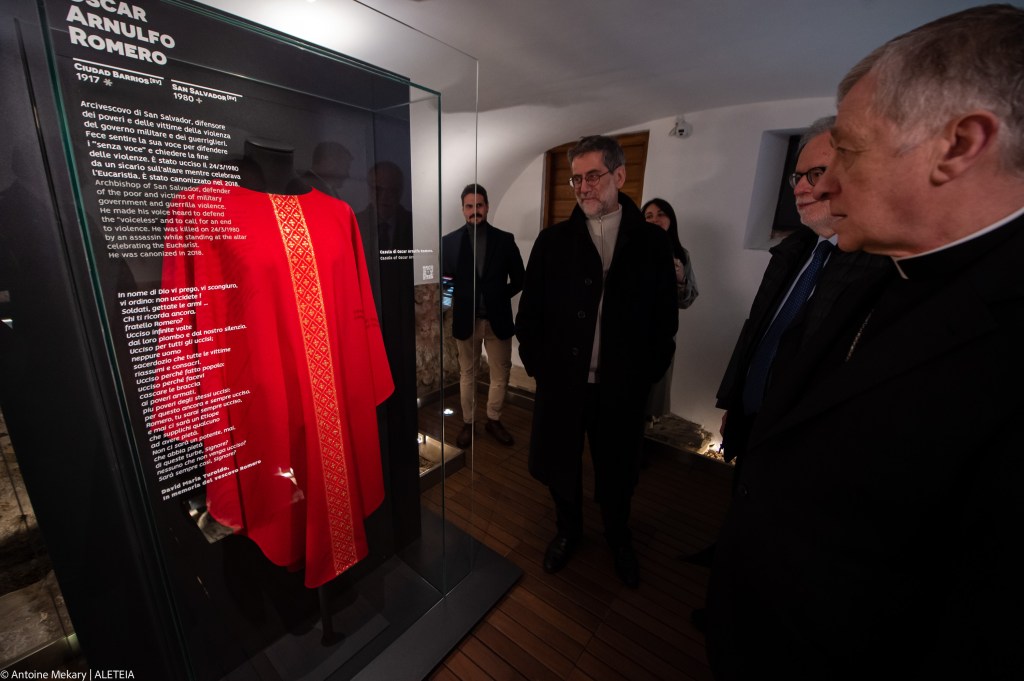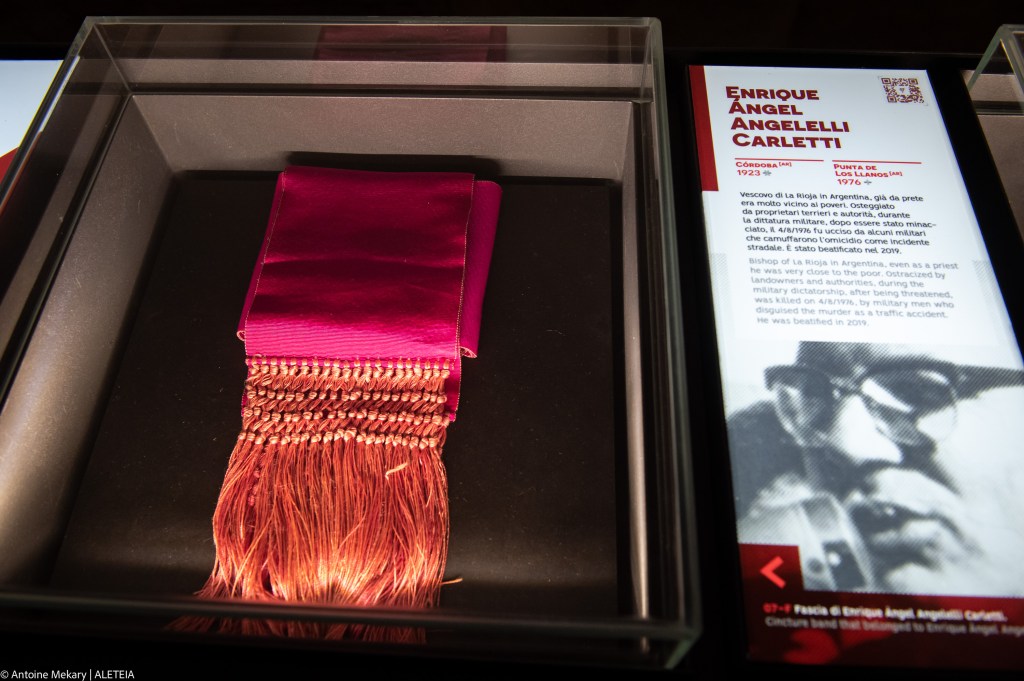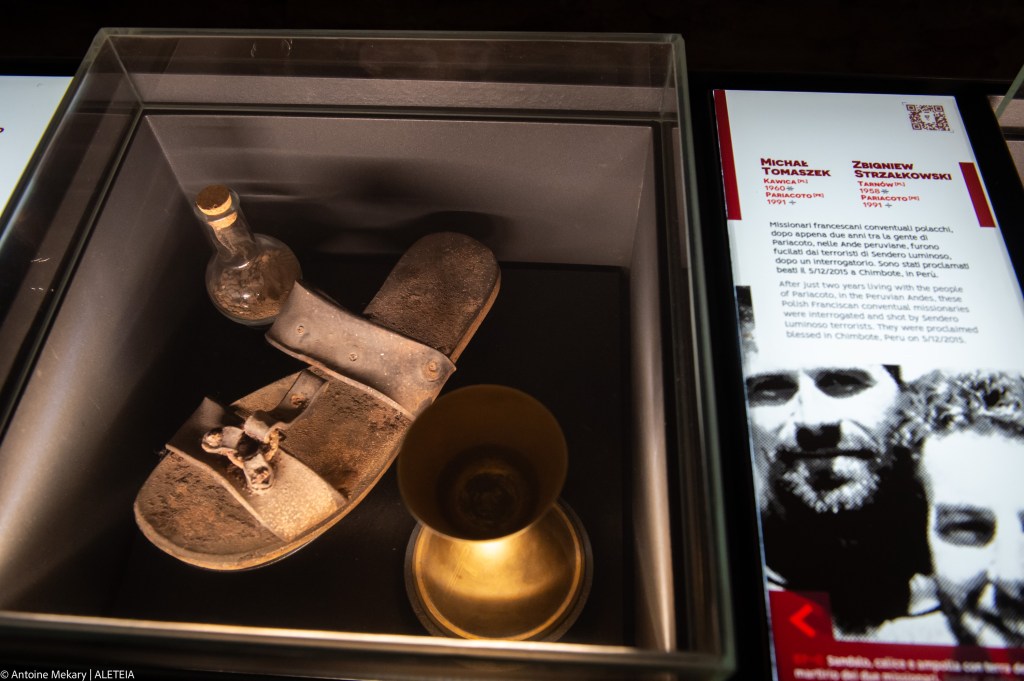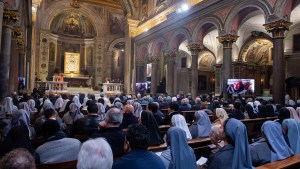On March 24, 1980, the Archbishop of San Salvador in El Salvador, Oscar Romero, was assassinated as he was celebrating Mass. He had strongly denounced the violent military dictatorship that was in place in the country at the time. Today he is a saint of the Catholic Church and his efforts to stay close to those who were oppressed, even at the cost of losing his life, are remembered on his feast day, which falls on the day he was murdered.
A snippet of Saint Oscar Romero’s life has made its way to Rome, as his missal and blood-colored chasuble are exhibited in the Basilica of San Bartolomeo all’Isola, a unique church on the Tiber island which preserves the memory and relics of martyrs of the 20th and 21st century.
Run by the Community of Sant’Egidio, the Church has six chapels and a crypt which feature the stories of modern martyrs from specific regions or historical moments of persecution.
On Saint Oscar Romero’s feast day the Church in Italy also commemorates a day of fasting and prayer in honor of missionary martyrs like Romero.
Aleteia invites its readers to discover some of the stories preserved alongside Saint Romero’s, in the Basilica of San Bartolomeo all’Isola.
The fervor of Blessed Bishop Enrique Angelelli
Enrique Angelelli was an Argentinian bishop murdered in 1976 during the Dirty War, a period of state terrorism and repression under the military dictatorship in Argentina. First as auxiliary bishop of Cordoba and then as bishop of La Rioja, Angelelli dedicated his time to serving the poor, especially in rural communities, and denounced social injustices. Already in 1973 one of his Masses was interrupted by a group of merchants and landowners throwing stones. “Even if they force us into silence, Christ speaks […] There is no page of the Gospel that commands us to be stupid,” the Bishop had said.
The tensions intensified to the point that during the Argentinian bishops’ ad limina visit to Rome in 1974, Bishop Angelelli was advised not to return to the country as his life might be at risk. With the military coup in March 1976, the violence continued and some months later two priests under Bishop Angelelli’s authority were murdered. Less than a month later he was also killed in what appeared to have been a car accident.
However, a folder which had been in his car and where he had kept documents concerning the killing of the two priests mysteriously disappeared after the crash. In July 2014 these documents were decisive in sentencing two army officers to life in prison. In 2019 Pope Francis, who had been the provincial of the Jesuits in Argentina when Bishop Angelelli was killed, beatified the prelate along with the two priests and another murdered layman. The Bishop’s sash is in a glass display case in the crypt of the Church.
Blessed Stanley Francis Rother: the USA’s first martyr
Stanley Francis Rother was an American priest from Oklahoma who went to Guatemala as a missionary some years after being ordained. Arriving in the Central American country at 33 years old, he dedicated his time to supporting the local population through agricultural projects and by helping build a school and a hospital. He also learned Spanish and the local indigenous Mayan dialect, Tzutujil, and translated the New Testament in this language.
Due to his defense of the indigenous populations and increasing violence against the Church in Guatemala, Father Rother returned to Oklahoma in 1981 for three months. However, his heart remained with his people so he returned to the Central American country, leaving a note for his Archdiocese of origin saying: “This is one of the reasons I have for staying in the face of physical harm. The shepherd cannot run at the first sign of danger.” A couple of months later he was murdered in the rectory of his Church.
He was declared blessed by Pope Francis in 2017, making him the first American martyr and first priest born in the United States to be beatified. His relic can be found in the crypt of San Bartolomeo all’Isola.
The cardinal killed by drug traffickers
Cardinal Juan Jesus Posadas Ocampo was archbishop of Guadalajara in Mexico when he was assassinated in 1993, only a couple of years after being made a cardinal by John Paul II. Ordained in 1950, Cardinal Ocampo had been formed during a difficult period for the Mexican Church and thus was the promoter for the cause of beatification of 25 Mexican martyrs, murdered in his state in 1927. They were later also canonized by John Paul II in 2000. Cardinal Ocampo also strongly denounced drug trafficking and the violent systems it created in Mexico.
In 1993 he was shot 14 times in the Guadalajara international airport as he was waiting for the Nuncio to arrive for a celebration to remember the martyrs. It was later discovered that his murderers were members of the prominent Tijuana Cartel. Although the exact motives surrounding his death remain unclear it is believed he could have been targeted for his condemnation of organized crime. His bishop’s staff, exhibited in the chapel of the Basilica, dedicated to the martyrs killed in the Americas, recalls his story.
The story of two Polish missionaries in Peru
Miguel Tomaszek and Zbigniew Strzałkowski were around 30 years old when they were assassinated in Pariacoto, Peru, in 1991. Both Franciscan priests were originally from Poland; they had been sent to South America by their Congregation to serve in a remote area of Peru. They were serving 64 villages scattered over a large mountainous region. For three years they supported the population not only spiritually but also socially through the local Caritas. These actions were not appreciated by the communist guerilla group “Sendero Luminoso,” which considered religion as a deceitful means to control the population.
On August 9, 1991, the guerilla forces entered the priests’ parish, tied them up and interrogated them on their devotion to the Church and to Christ. They then drove them to another village and shot them and left a sign on Father Strzałkowski’s body saying, “This is how the servants of imperialism die.” The two priests were beatified by Pope Francis in 2015, along with another Italian missionary killed by Sendero Luminoso. In the crypt of the Basilica are displayed a sandal, a chalice and a cruet with dirt, which all belonged to the two priests.
A Bishop in the midst of Ecuador’s indigenous populations
Bishop Alejandro Labaka was a Spanish Capuchin priest who was sent on mission to Ecuador. He spent his time trying to approach the Huaorans, also known as acuas, an indigenous population in the Amazon rainforest.
“These indigenous minorities are the original peoples of Ecuador, they are the true owners of their country, the ones who were here before the state, long before the Republic and its laws. We must make sure that society recognizes them as primordial citizens, respects them, helps and protects them,” Bishop Labaka wrote. “Jesus cared about the little ones, the abandoned. That’s what we have to do as well.”
In 1987 he was speared by the population he was trying to approach and died. His pectoral cross is located in the chapel dedicated to the martyrs who died in the Americas.
Read about a different section of this fascinating and beautiful church here:
